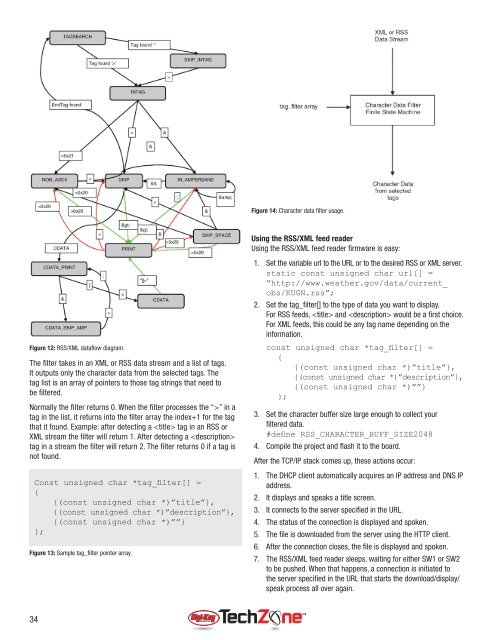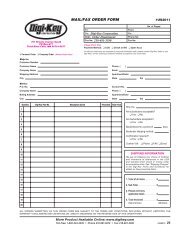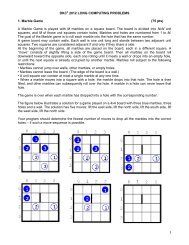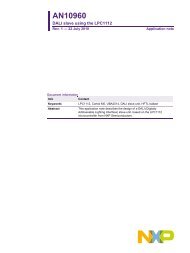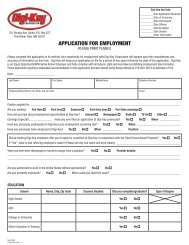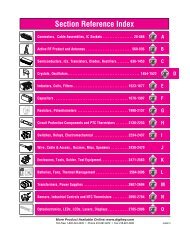Microcontroller Solutions TechZone Magazine, April 2011 - Digikey
Microcontroller Solutions TechZone Magazine, April 2011 - Digikey
Microcontroller Solutions TechZone Magazine, April 2011 - Digikey
You also want an ePaper? Increase the reach of your titles
YUMPU automatically turns print PDFs into web optimized ePapers that Google loves.
Figure 14: Character data fi lter usage.<br />
Using the RSS/XML feed reader<br />
Using the RSS/XML feed reader fi rmware is easy:<br />
Figure 12: RSS/XML datafl ow diagram.<br />
The fi lter takes in an XML or RSS data stream and a list of tags.<br />
It outputs only the character data from the selected tags. The<br />
tag list is an array of pointers to those tag strings that need to<br />
be fi ltered.<br />
Normally the fi lter returns 0. When the fi lter processes the “>” in a<br />
tag in the list, it returns into the fi lter array the index+1 for the tag<br />
that it found. Example: after detecting a tag in an RSS or<br />
XML stream the fi lter will return 1. After detecting a <br />
tag in a stream the fi lter will return 2. The fi lter returns 0 if a tag is<br />
not found.<br />
Const unsigned char *tag_filter[] =<br />
{<br />
{(const unsigned char *)”title”},<br />
{(const unsigned char *)”description”},<br />
{(const unsigned char *)””}<br />
};<br />
Figure 13: Sample tag_fi lter pointer array.<br />
1. Set the variable url to the URL or to the desired RSS or XML server.<br />
static const unsigned char url[] =<br />
“http://www.weather.gov/data/current_<br />
obs/KUGN.rss”;<br />
2. Set the tag_fi lter[] to the type of data you want to display.<br />
For RSS feeds, and would be a fi rst choice.<br />
For XML feeds, this could be any tag name depending on the<br />
information.<br />
const unsigned char *tag_filter[] =<br />
{<br />
{(const unsigned char *)”title”},<br />
{(const unsigned char *)”description”},<br />
{(const unsigned char *)””}<br />
};<br />
3. Set the character buffer size large enough to collect your<br />
fi ltered data.<br />
#define RSS_CHARACTER_BUFF_SIZE2048<br />
4. Compile the project and fl ash it to the board.<br />
After the TCP/IP stack comes up, these actions occur:<br />
1. The DHCP client automatically acquires an IP address and DNS IP<br />
address.<br />
2. It displays and speaks a title screen.<br />
3. It connects to the server specifi ed in the URL.<br />
4. The status of the connection is displayed and spoken.<br />
5. The fi le is downloaded from the server using the HTTP client.<br />
6. After the connection closes, the fi le is displayed and spoken.<br />
7. The RSS/XML feed reader sleeps, waiting for either SW1 or SW2<br />
to be pushed. When that happens, a connection is initiated to<br />
the server specifi ed in the URL that starts the download/display/<br />
speak process all over again.<br />
34


